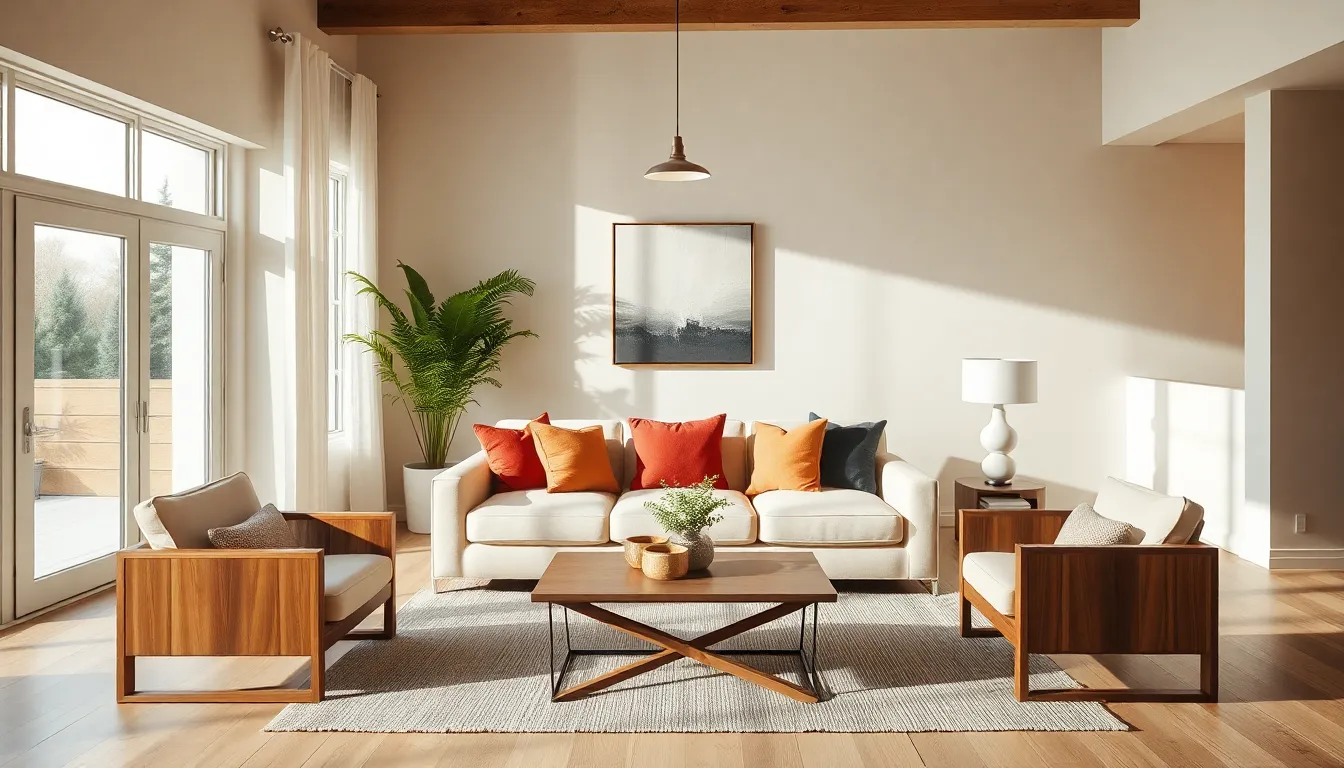In the competitive world of real estate, the visual appeal of a property plays a crucial role in attracting potential buyers. Interior design goes beyond mere aesthetics: it shapes the way a space feels and functions. This article explores the importance of interior design in real estate through the lens of Homerocketrealty, highlighting key elements, current trends, and how professional designers can enhance property value. By understanding the impact of well-executed interior designs, property owners can make informed decisions to maximize their investments.
Table of Contents
ToggleUnderstanding the Importance of Interior Design in Real Estate

Interior design is not just a matter of making a space look good: it plays an essential role in how potential buyers perceive a property. A well-designed interior creates a welcoming atmosphere that invites buyers to imagine themselves living in the space. Studies have shown that homes with cohesive and appealing interiors tend to sell faster and command higher prices.
In real estate, first impressions matter. When buyers walk into a property, their initial thoughts can be influenced by layout, color schemes, furnishings, and lighting. Poor interior design can overshadow the structural potential of a home, making it less appealing even if it has favorable features. Hence, understanding the role of interior design in real estate is crucial for both sellers and buyers.
Key Elements of Effective Interior Design
Effective interior design encompasses several critical elements that come together to create harmonious spaces. Here are the key components to consider:
- Color Palette: The choice of colors sets the mood of a room. Neutral tones tend to be more appealing to a broader audience, while bold colors can make a statement if done thoughtfully.
- Furniture Arrangement: Flow and functionality are vital. Furniture should complement the space while encouraging easy movement and accessibility.
- Lighting: Natural and artificial light can drastically change the feel of a room. Effective lighting can enhance architectural features and make spaces appear larger and more inviting.
- Textures and Materials: A mix of textures adds depth and interest to interiors. Quality materials contribute to the overall feel of a space and can elevate its perceived value.
- Personal Touches: While the aim is to appeal to potential buyers, incorporating personalized elements can make a home feel warm and lived-in.
Trends in Interior Design for Residential Properties
The world of interior design is ever-evolving. Currently, several trends are shaping residential properties:
- Sustainable Design: Eco-friendly materials and energy-efficient solutions are becoming increasingly desirable among environmentally conscious buyers. Incorporating sustainable practices not only benefits the environment but can also attract a niche market.
- Open Spaces: Open floor plans continue to dominate residential designs, promoting a sense of spaciousness and community within the home.
- Multi-Functional Spaces: Especially due to the recent shift towards remote work, homes that offer versatile spaces are in high demand. Designs that allow for both work and leisure in the same area are appealing to modern buyers.
- Smart Home Integration: Technology plays a significant role in today’s design trends. Buyers are looking for homes that incorporate smart home features, making everyday life easier and more efficient.
- Natural Elements: Biophilic design principles that bring the outdoors inside, through plants, natural light, and outdoor materials, are becoming more popular, creating a calming and restorative environment.
How Interior Design Enhances Property Value
Investing in quality interior design can substantially enhance a property’s value. Here are ways that well-executed design elements translate into increased property valuations:
- Increased Buyer Interest: Properties that are aesthetically pleasing and functional attract more buyers, resulting in quicker sales.
- Higher Selling Prices: Well-designed homes often achieve higher selling prices, as they stand out in a crowded market.
- Reduced Time on Market: Homes with thoughtful interior design typically spend less time on the market, saving sellers time and money.
- Adaptability: Properties designed with modern trends in mind tend to adapt better to changing buyer preferences, maintaining relevancy over time.
- Durability and Quality: Choosing quality materials that withstand the test of time not only elevates the interior aesthetics but can prevent costly repairs down the line, making it a smart investment.
Choosing the Right Interior Design Style for Your Home
Selecting an appropriate interior design style is crucial because it reflects personal taste and influences buyer appeal. Here are a few popular styles and their characteristics:
- Modern: Clean lines, minimalistic elements, and open spaces define modern design. This style is popular for its functionality and simplicity.
- Traditional: Rich colors and classic furniture characterize traditional designs, often incorporating ornate details and a sense of history.
- Contemporary: This style focuses on current trends while emphasizing comfort and sustainability. It’s adaptable, allowing for the integration of various elements.
- Rustic: Emphasizing natural materials and warm tones, rustic design creates a cozy, inviting atmosphere that appeals to many buyers.
- Industrial: Features raw materials, exposed structures, and a loft-like feel, giving properties an edgy, urban vibe.
When choosing a style, consider the architectural elements of your home. The right design should enhance the property’s features rather than clash with them.
Working with Professional Interior Designers
Partnering with a professional interior designer can be a game-changer for property owners. Here’s how:
- Expertise: Interior designers bring industry knowledge and a keen eye for design, ensuring that your home looks its best.
- Customized Solutions: They can tailor solutions to fit the unique needs and style preferences of a client, helping create a one-of-a-kind interior.
- Resource Connections: Designers have established relationships with suppliers, allowing access to high-quality materials and furnishings that might not be available to the general public.
- Time Efficiency: A designer can streamline the decision-making process, saving homeowners valuable time that can be better spent elsewhere.
- Return on Investment: Professional design often pays for itself through increased property value, making it a worthwhile investment for sellers aiming to maximize profits.
Conclusion
To conclude, the impact of interior design on real estate is significant and multifaceted. From enhancing buyer appeal to increasing property value, understanding the importance of effective design is essential for anyone involved in the housing market. Keeping up with trends and working with professionals can make a remarkable difference in how a home is perceived. For buyers and sellers alike, investing time and resources into exceptional interior design proves to be a strategic decision in a competitive market.



